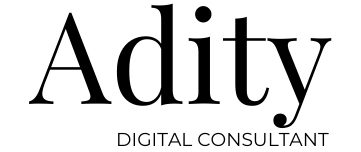Human interactions are deeply rooted in non-verbal communications. Your body language, the way you make eye-contact, the gestures of hands, and the smile or frown on your face act as signs of how interested or disinterested you may be in a conversation.
The digital world robs us of these luxuries. We no longer have the opportunity to rely on these additional elements that help us understand whether a consumer takes positively to your product or service or not. This is the reason why making an impression through logos and profile picture ideas without face are more difficult than doing it through human interaction.
Seasoned and successful brands know this all along. As a result, they regularly update their logos to represent current business values. Their profile pictures are also likely to be powerful images – either their logo or an impactful promotional image of the brand.
Can a logo really impact user behavior?
Wondering what does your profile picture reveal about you? A logo or profile picture ideas without face addresses marketing problems with more effectiveness than you may have thought of. Once a brand begins to grow in size and reputation, the logo serves as a mark of recognition for your consumers, vendors, and suppliers. Your marketing team will have the ability to promote products using the logo as a symbol of your company that reinforces your brand values and effortlessly attracts your customers.
A lot of startups or small businesses feel that logos are over-hyped. They find them inconsequential and may not spend a lot of time in choosing the right logo. Eventually, some realize their mistake and may revise their logo. Getting the logo or profile picture right is important for many reasons.
- Facilitates brand recognition–Your consumers will be able to spot your brand easily among others because of a logo or profile picture. Stationery or products with your logo will also serve as an indirect medium of advertisement for your brand.
- Distinguishes your brand from competitors – Like many other companies, if you are operating in cutthroat competition then you will want your brand to be distinguished from others in the industry. A logo can be useful for this purpose.
- Piques interest among prospects–Many online users may want to know more about your product if they come across the logo and find it interesting.
- Conveys your brand’s core values – Through a logo’s design, you can impart values like professionalism, sophistication, sincerity, ruggedness, adventure, etc.
Logos and profile pictures help you in ‘impression management’. They play a role in deciding whether your users are impressed by your brand or not even before they access your product or service offerings.
At the same time, there are hidden messages that your logo uses to communicate your brand’s position and values. For example, the choice of colors, the fonts, and the complexity or simplicity of the logo voice your brand’s work philosophies and how it wants to be perceived by the audience.
What do your customers really want to see in a logo?
Knowing everything that your brand can express through a logo can help you design the logo in a better way. But it is even more important for businesses to find out what their customers want to see in a logo. This is the key to designing a successful logo. Your logo shouldn’t just be about what you want to say, but also an acknowledgment of what your customers would like to see.
Clarity – Information about the industry which your business belongs to and the products or services your brand offers.
Integrity – By sharing clear information about your brand, you can make an honest impression among your audiences.
Personality –Whether your business makes toys or shoes, you may want to choose a personality that your brand resonates with.
Descriptive logos or non-descriptive logos

A descriptive logo tells you exactly what the brand does. By supporting visualization of the brand’s products it establishes a connection with the target audience. Animal Planet moved away from the green and white color combination for its logo to depict a joyful elephant leaping over the brand’s name. This logo changes color according to the text or communications it is used against. These recent change in logo from just the words ‘animal planet’ to include the elephant on it makes the logo more descriptive.
Non descriptive logos, on the other hand, will use images, graphics, or letters that may not provide a full picture of the brand’s product or service offering or the industry that the brand belongs to.
For example, if you would look at the latest Starbucks logo, it does not do much in terms of describing what the brand offers.
A study conducted by Harvard Business Review of 597 logos showed that 60% of the companies used a non-descriptive logo but consumers would prefer a descriptive logo especially if the brand is unknown to them or does not enjoy global popularity.
Reasons why descriptive logos work:
- They make a brand look more authentic to customers
- It is more likely to create a positive impression among customers as compared to non-descriptive logos
- Increases the chances of conversions for brands
A logo or a profile picture cannot be the only thing that affects your sales, but if you are a new brand then descriptive logos help users gain clarity about your business and the products your offer. They are more likely to be drawn towards a descriptive logo than a non-descriptive logo.
By looking at the evolution of the logos for Animal Planet as well as Starbucks, you will notice how early renditions were more descriptive and informative for users. This was the time when the brands did not enjoy the popularity that they do today.
It shows how user behavior can be impacted with the help of a logo or profile picture ideas without face and by using the right logo you can create a loyal customer base for your brand.

